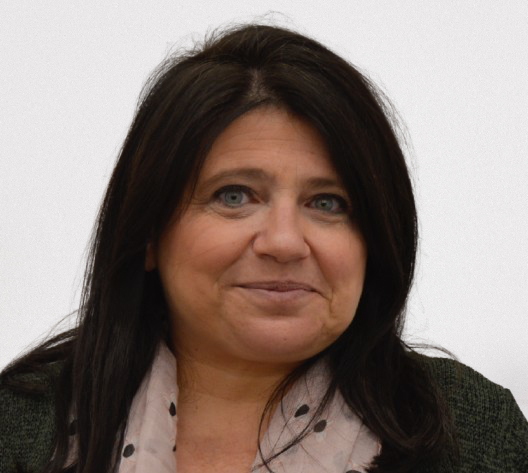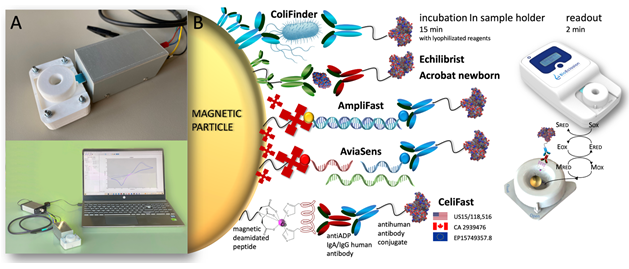
Bridging biosensing technologies from lab to life
 |
Prof. María Isabel Pividori 1 Groupde Sensors and Biosensors, Universitat Autònoma de Barcelona, Bellaterra, Spain 2 Institut de Biotecnologia i de Biomedicina, Universitat Autònoma de Barcelona, Bellaterra, Spain 3 BioEclosion SL Edifici Eureka, campus UAB, Bellaterra, Sapin |
This presentation shares the experience of translating university research into real applications, through the development of a portable biosensing platform for point-of-care diagnostics. The project started in an academic group at the Universitat Autònoma de Barcelona and later became a spin-off company, with the aim of bringing diagnostic technologies closer to society.
The technology is based on a small, easy-to-use device that combines magnetic actuation with electrochemical detection. It includes a disposable cartridge and a digital reader, working with batteries and connected to a mobile phone. The platform is flexible and can detect different kinds of biomarkers-such as proteins, DNA, RNA or exosomes1, and bacteria2-from complex samples like blood. It gives results in a few minutes and does not require laboratory infrastructure.
After several stages of development, the device has reached technology readiness levels between TRL 6 and 7. It has been applied in different cases, such as detecting infectious diseases with a portable PCR and biosensor system, diagnosing celiac disease using magnetic immunoassay, or stratifying fever in children by measuring specific inflammation biomarkers. All these applications are based on the same core technology, which is protected by international patents.
This story shows how scientific work at the university can become real products with social impact. It is also an invitation to young researchers to explore entrepreneurship as a way to make their research useful outside the lab.

Fig.1. Panel A. Laboratory proof of concept of the biosensing device, containing a cartridge for the magnetic actuation, connected to a portable commercial bipotentiostat. Panel B. Molecular strategies integrated in the core of the technology, involving magnetic particle reaction and HRP labelling, and the electrochemical readout on the biosensing platform, which is common for all kind of targets, regardless of their nature. The figure shows the two components (PCT/EP2022/071078): i) Disposable cartridge and ii) Digital reader for the readout. Data may be collected directly from the display of the digital reader and sent by Bluetooth to an App.
Acknowledgements
ACROBAT Newborns Grant agreement ID: 101158797 (Horizon Europe), Echilibrist Grant agreement ID: 101158797 101057114 (Horizon Europe), AviaSens. Proyecto en Colaboración Pública-Privada 2023 Ref CPP2023-010442; AmpliSens. Proyecto en Colaboración Pública-Privada 2021 Ref CPP2021-008459; Neotec. CDTI MICINN. Reference: EXP - 00123637 / SNEO-20191139; CeliFast: Grant Agreement ID: 691556 (Horizon 2020) Sub-Grant Agreement No.: 2017/A17, Sens4IVD PID2022-136453OB-I00 Ministry of Science, Innovation and Universities, Spain.
References
- R. da Fonseca Alves, et. al, Biosensors and Bioelectronics, 255 (2024) 116211.
- M. Mesas Gómez, at al, Sensors and Actuators B: Chemical, 403 (2024) 135211.
